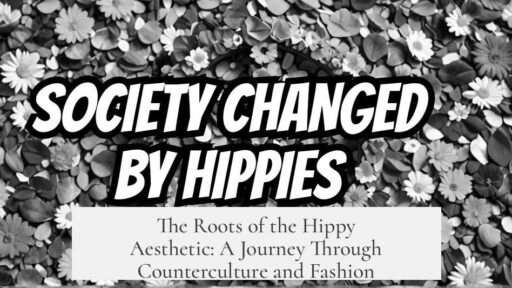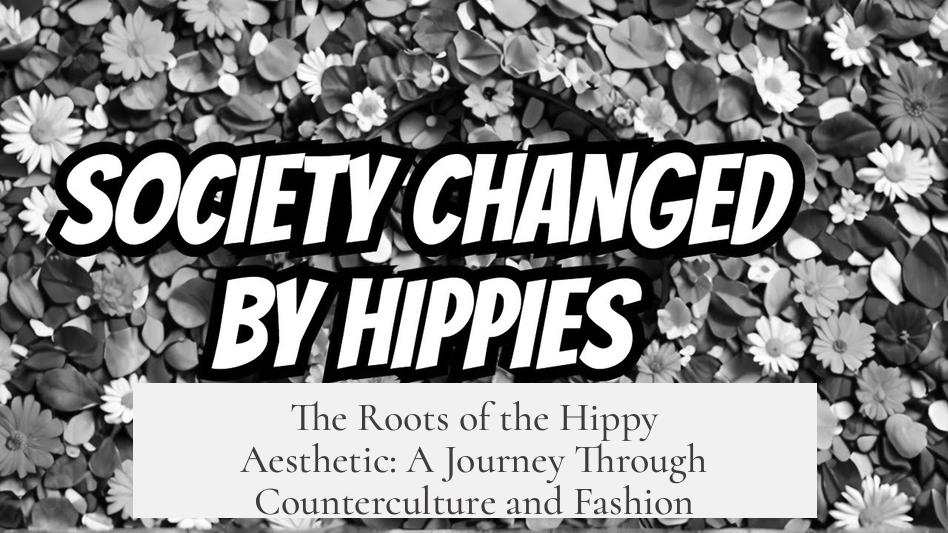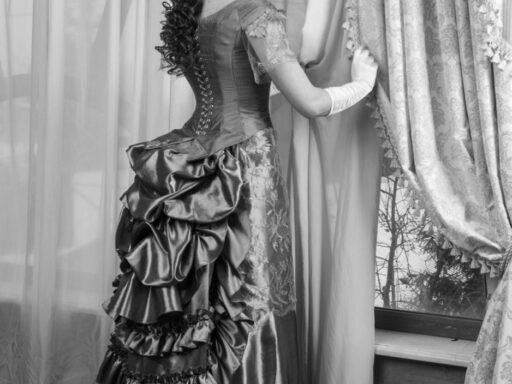The origins of the hippy aesthetic lie in a blend of historical counterculture, rejection of societal norms, nature inspiration, psychedelic art, ancient textile techniques, and opposition to the Vietnam War. This aesthetic emerges from a desire to break away from mainstream culture. It embraces natural materials, bright colors, and symbolic motifs that reflect peace and individuality.
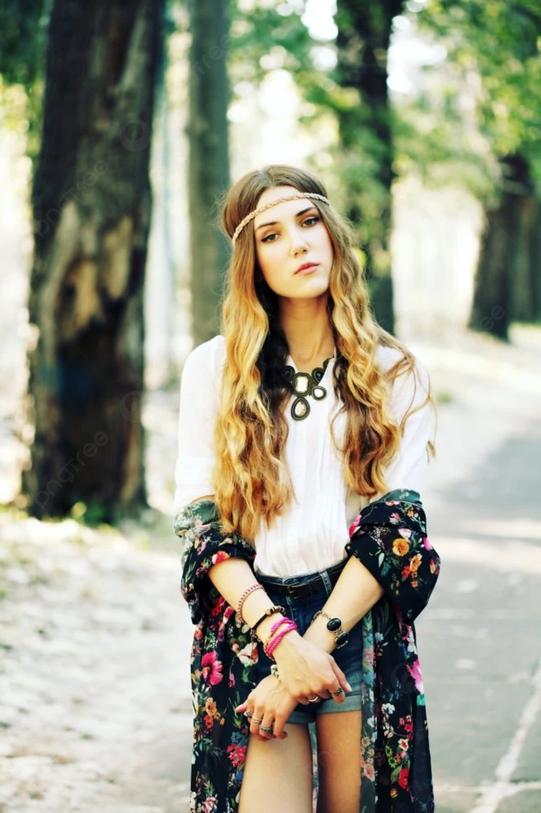
The roots can be traced back to 19th-century Europe. Early communal living movements, particularly in Germany, opposed growing urbanization. They sought a return to simpler, spiritual lifestyles. This set foundational values for later hippies, who also prized nature and community.
The aesthetic deliberately rejects mid-20th-century formal dress codes like suits and ties. Instead, it favors loose, comfortable clothing in natural hues, long hair, and accessories such as circular sunglasses. These choices symbolize nonconformity.
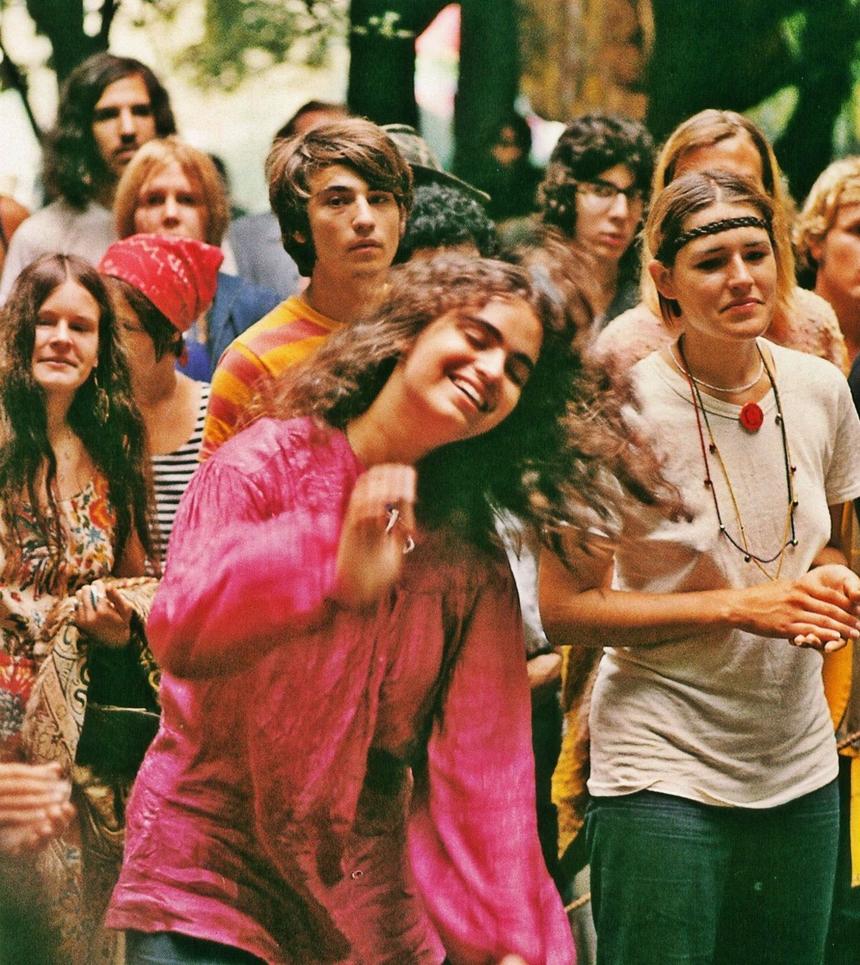
Nature provides a core influence. Bright colors and floral patterns dominate hippie clothing designs. These convey a connection to the earth and life cycles, echoing their environmental awareness.
The psychedelia movement adds another layer. Psychedelic experiences with substances like LSD and mushrooms inspired art that uses vivid, distorted visuals. These artworks influenced fashion, producing patterns that capture altered states and emotional depth.
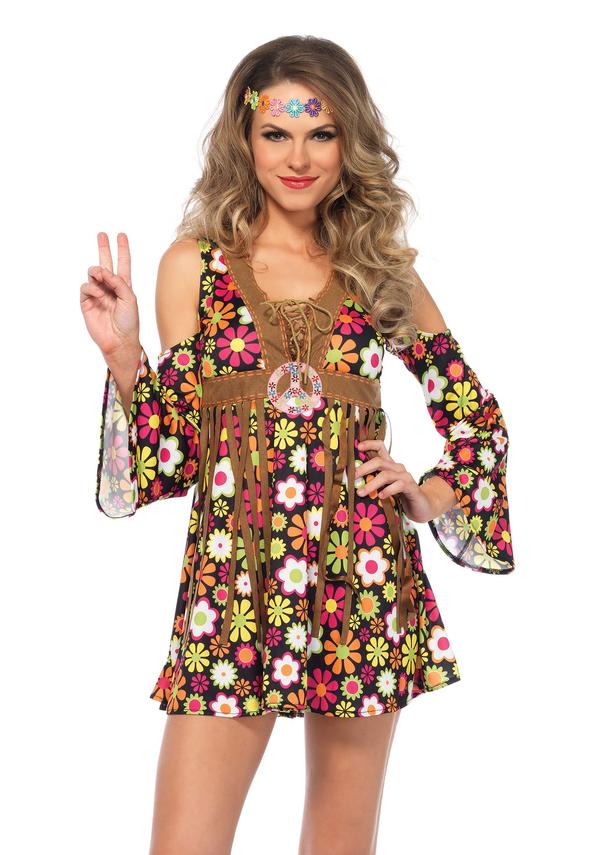
Tie-dye exemplifies this influence. Though an ancient technique dating back to 500-800 AD, it surged in popularity within the hippie movement. Tie-dye’s vibrant patterns aligned perfectly with the psychedelic and nature-inspired aesthetic.
The Vietnam War’s cultural impact also shaped the style. Many hippies resisted the war, promoting ideals of peace, love, and equality. These values appeared in their fashion choices, such as love beads and floral designs, reinforcing their anti-war and humanitarian messages.
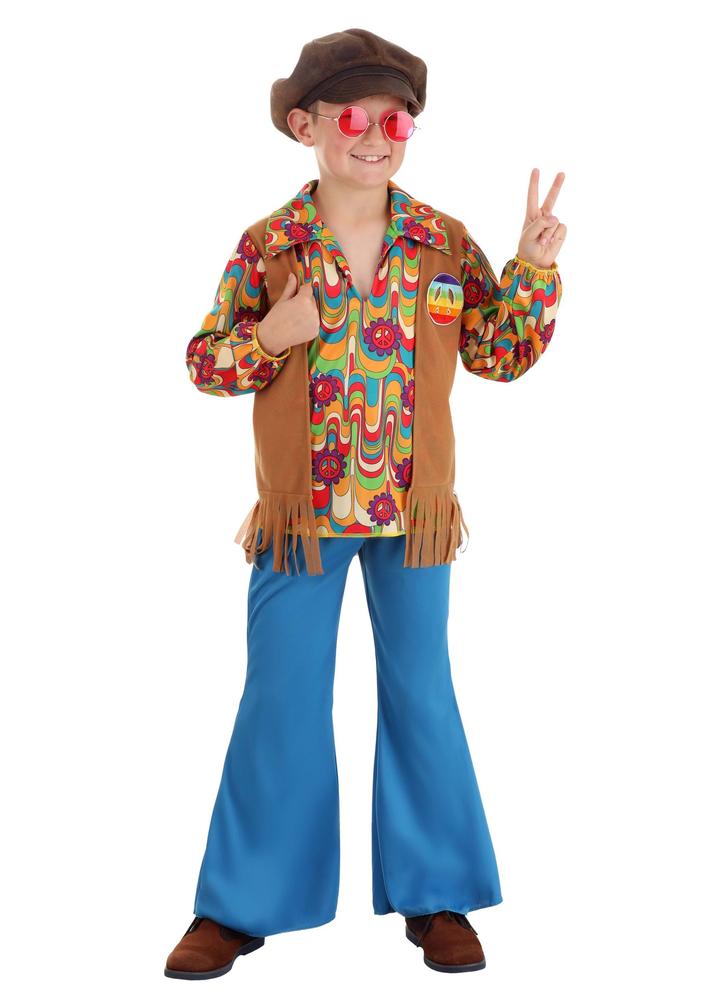
| Origin | Contribution to Hippy Aesthetic |
|---|---|
| 19th-century communal living (Germany) | Return to nature, spiritual life |
| Rejection of societal norms | Natural colors, long hair, casual attire |
| Nature influence | Bright colors, floral patterns |
| Psychedelia | Distorted, vivid visual motifs |
| Tie-dye technique | Vivid, bright patterned clothing |
| Vietnam War opposition | Peace symbolism, love beads |
- Hippy aesthetic blends natural, colorful, and symbolic elements.
- Historical counterculture and communal living influence core values.
- Psychedelic art shapes visual style using bright, distorted patterns.
- Anti-war ideals manifest in clothing choices and accessories.
- Tie-dye connects ancient craftsmanship to 1960s fashion.
What Are the Origins of the Hippy Aesthetic?
The hippie aesthetic finds its roots in various historical, social, and cultural influences, each weaving together to form that instantly recognizable look filled with vibrant colors, floral patterns, and a joyful disregard for convention.
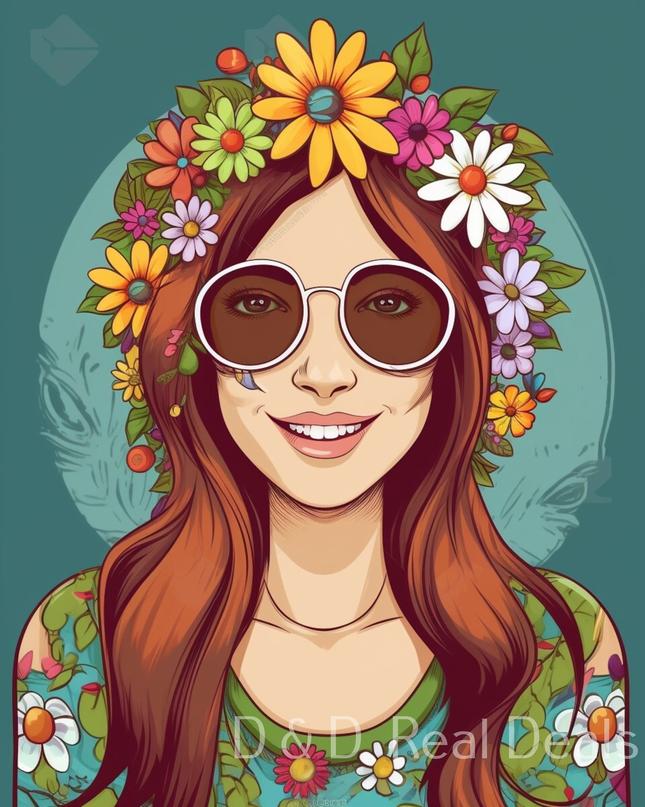
If you’ve ever wondered why tie-dye shirts, embroidered headbands, and circular sunglasses scream “hippie,” you’re about to take a colorful journey through time to understand it all.
Early Counterculture Movements: The Spark from the 1800s
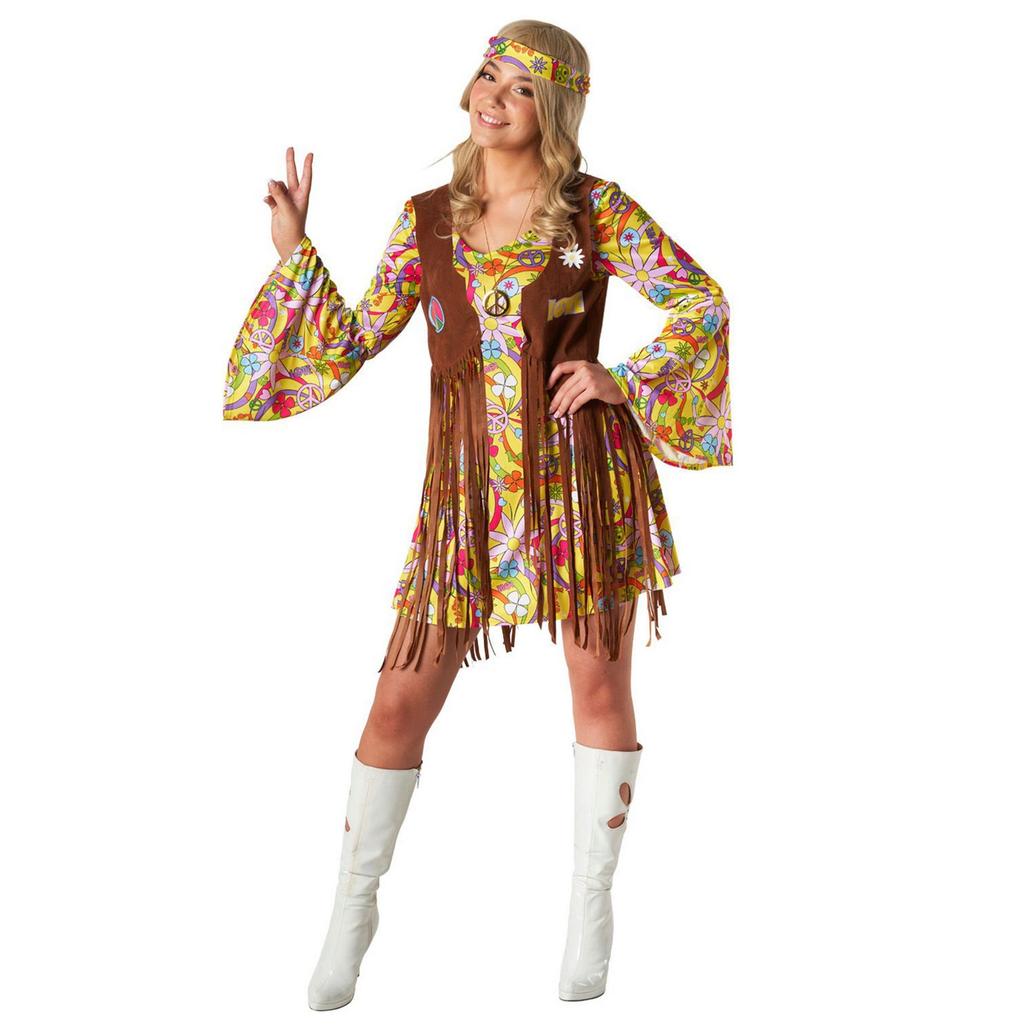
Believe it or not, the seeds of the hippie aesthetic were planted in Europe during the 1800s, long before flower power became a thing. In Germany, some communities embraced communal living as a reaction against the rapid urbanization saturating cities.
These groups aimed to return to a natural and spiritual life connected with the land—an antidote to the hustle and concrete jungle surrounding them. Their ideals echoed through time and became the philosophical backbone for the hippies in the 1960s.
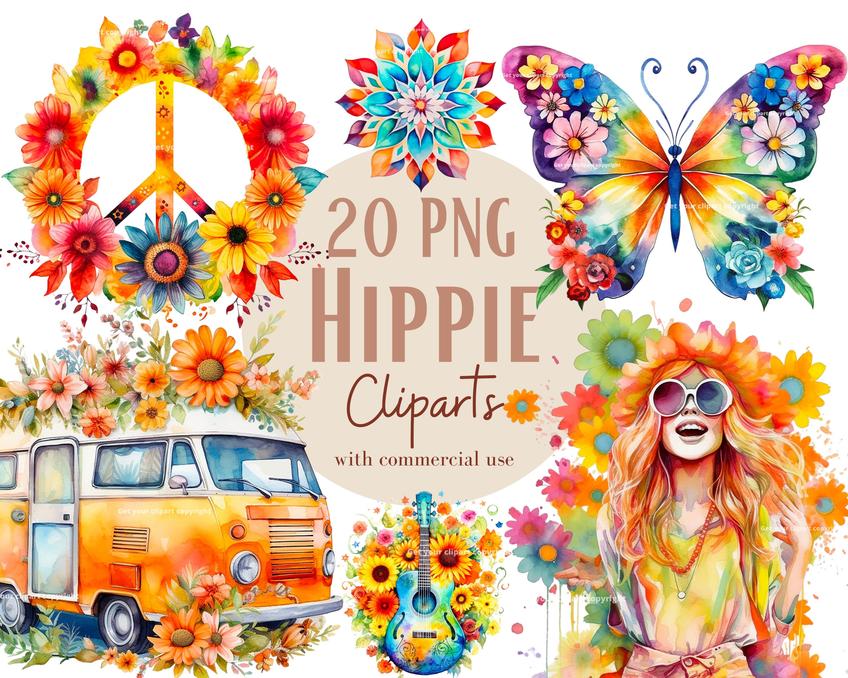
This isn’t just some hippie myth. The communal living and rejection of industrial urban life show that the aesthetic has deep roots in a desire to reconnect—with nature, with each other, and with a simpler way of living.
Rebellion Through Fashion: Bye-Bye Suit and Tie
In an era where conformity meant donning a suit and tie, hippies took a bold stand with their unconventional attire. They swapped stiff fabrics and monochrome colors for loose, flowing outfits
Long hair, ripped jeans, and circular sunglasses became more than style—they were political statements. Wearing these was a middle finger to societal norms that demanded uniformity and seriousness.
Why did this matter? Because clothes say a lot without words. By donning natural colors and unconventional patterns, hippies visually broadcasted their commitment to freedom and individuality.
Mother Nature’s Palette: Bright Colors and Floral Designs
Nature isn’t just a vibe; it’s the color palette that defines hippie fashion. Bright, joyful hues and floral patterns dominate the look, reflecting an admiration for the organic world.
Think about tie-dye shirts pulsing with color, or dresses adorned with flowers—you’re seeing the hippies’ love letter to Earth. It’s about harnessing nature’s beauty to make a statement: life’s vibrant and worth celebrating.
The Psychedelia Movement: Art Meets Altered States
The visual style of the hippie aesthetic owes much to psychedelia, a movement that blossomed alongside the subculture. Psychedelic art features distorted shapes, swirling patterns, and neon colors that seem to dance off the fabric.
This style didn’t appear by accident. Psychedelic visuals aimed to mimic and evoke feelings experienced during psychedelic trips induced by substances like LSD and mushrooms.
These colors and distorted images weren’t just for fun—they were a portal to an expanded consciousness, aiming to tap deeper emotional layers through art and fashion alike.
Tie-Dye: Ancient Technique Revived
Here’s something fun: tie-dye isn’t a 1960s invention—it dates back to 500-800 AD! This ancient fabric dyeing method found new life with hippies because it perfectly matched their psychedelic vibe.
Creating swirling, unpredictable patterns in vivid colors, tie-dye garments broke away from predictable and dull fabric designs. They symbolized freedom—freedom in pattern, color, and spirit.
The Vietnam War: Fueling a Fashion Revolution
While flowers and beads might seem loosely connected to politics, the Vietnam War deeply shaped the hippie aesthetic. Many hippies viewed the war as an unnecessary, tragic conflict.
So, their clothing choices echoed their ideals: bright colors and floral patterns spoke of peace and love, standing in bold contrast to war and destruction. Love beads? They weren’t just a pretty accessory but represented unity and harmony.
The message was clear: This isn’t just about fashion—it’s about making visual noise against violence and oppression.
Connecting the Dots
The hippie aesthetic isn’t just a collection of random fashion choices. It’s a brilliant fusion of history, art, philosophy, and social protest.
- From 19th-century communal movements seeking natural simplicity
- To a radical rejection of formal societal dress codes
- Inspired by nature’s vibrant colors and patterns
- Enriched by the psychedelic movement’s artistic innovation
- Revival of ancient techniques like tie-dye
- And motivated by a heartfelt anti-war stance
When these factors blend together, they create an unforgettable style that remains iconic today.
What Can Modern Fashion Learn?
Want to channel hippie vibes without looking like you stepped out of a time machine? Think about why the aesthetic resonated in the first place.
It’s not just about wearing floral prints or tie-dye; it’s about embracing values: freedom, peace, connection to nature, and a willingness to stand apart from societal expectations.
Next time you pick out your outfit, ask yourself: Does my style say who I am, or who others expect me to be?
Final Thoughts
The origins of the hippie aesthetic reach deeper than flower crowns and bell bottoms. Rooted in historical counterculture and rebellion against societal constraints, it celebrates life through color, nature, and purposeful nonconformity.
This aesthetic continues to influence designers and free spirits alike because it captures a timeless human desire—to live authentically and celebrate the world around us without apology.
So, next time you see a swirl of tie-dye or a floral dress, remember you’re witnessing a vibrant story that stretches back centuries, carried forward by the dreamers who dared to color outside the lines.
